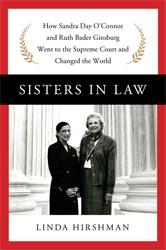By
– August 25, 2011
According to Joseph Litvak, a professor of English at Tufts University, the role that Jews played in the government investigation of Hollywood during the 1940’s and 1950’s is best examined through the prism of a “stoolpigeon culture.” His narrative focuses on those Jewish writers and actors who testified before the House Committee on Un– American Activities. For Litvak, this testimony resembles a morality play in which valiant and cosmopolitan radicals such as Lillian Hellman, Zero Mostel, and Abraham Polonsky were paired off against craven informants such as Abe Burrows, Jerome Robbins, and Budd Schulberg, who desperately sought to save their own careers. The possibility that those who named names might possibly have had more lofty motives is rejected out of hand.
Litvak’s narrative is wide-ranging, covering movies (The Jazz Singer, The Front, On the Waterfront, Body and Soul, Crossfire, and Gentlemen’s Agreement), Broadway musicals (West Side Story, Bells Are Ringing, and Fiddler on the Roof ), and well-known Jewish entertainment personalities such as Barbra Streisand. While these are familiar topics, this book will be heavy going for those unfamiliar with the recondite and convoluted jargon of contemporary “cultural studies.” This book was written for fellow academicians and to provide a usable past for radicals adrift in contemporary America. Other readers, however, will question whether “culture” is the proper term to describe what involved a relatively small number of people with differing responses to the Hollywood inquisition, and they will also object to Litvak’s often strained interpretation of texts designed to reinforce his ideological predilections.
Edward Shapiro is professor of history emeritus at Seton Hall University and the author of A Time for Healing: American Jewry Since World War II (1992), We Are Many: Reflections on American Jewish History and Identity (2005), and Crown Heights: Blacks, Jews, and the 1991 Brooklyn Riot (2006).




